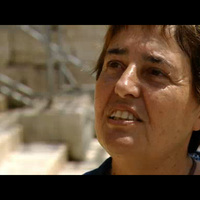Papers by Ethan Matt Kavaler
The American Historical Review, 1998
status: …, 2005
... Authors: De Jonge, Krista Capouillez, Marcel Dehon, Didier Didier, Robert Kavaler, Ethan Matt... more ... Authors: De Jonge, Krista Capouillez, Marcel Dehon, Didier Didier, Robert Kavaler, Ethan Matt Lecocq, Isabelle Dartevelle, Patrice Pierard, Christiane. Editors: De Jonge, Krista Capouillez, Marcel De Reymaeker, Michel Van Caenegem, Roland. Issue Date: 2005. ...
CAA.reviews, Aug 11, 2011
Renaissance Quarterly, 2008
Renaissance Quarterly, 2019
Early modern ornament might profitably be considered as a set of systems, each with its own rules... more Early modern ornament might profitably be considered as a set of systems, each with its own rules. It signaled wealth and status. It offered pleasure and prompted curiosity. It cut across the apparent divide between the vernacular and the classicizing. It was relational, understood in the context of a given subject but not necessarily subservient to it. The notion of ornament as essentially supplemental and the prejudice against ornamental excess are both children of the late eighteenth century. Both ideas depend on a post-Enlightenment conviction of the work of art as an autonomous, aesthetically self-sufficient object, an idea not fully formed in the early modern era.

Ornamenta Sacra, 2020
Netherlandish carved retables presented as miniatures with figurines a fraction of the size of th... more Netherlandish carved retables presented as miniatures with figurines a fraction of the size of the personages they represented. The miniature was a natural domain for storytelling, for devising narratives, a several authors have proposed. These carved altarpieces presented worlds that differed in scale an in ornamental framing from experience. We might think of them as heterocosms, realms related to our world but revealing their sacred status.
Reduced scale also helped viewers take in the whole, to see an altarpiece in its entirety rather than as a series of disparate parts. These composite structures could, thus, serve as models that help us grapple with abstract ideas such as time and space. Lévi-Strauss maintained that miniatures are conspicuously the product of human labor and present as an active working through of concepts and relationships. Matthew Day and others have argued that materials play an essential role in forming belief systems. Material objects can provide a cognitive scaffolding to the thinking process; they can allow the mind to off-load difficult problems of cognition. Such models may be essential to our understanding of abstract thought.

Netherlandish carved retables presented as miniatures with figurines a fraction of the size of th... more Netherlandish carved retables presented as miniatures with figurines a fraction of the size of the personages they represented. The miniature was a natural domain for storytelling, for devising narratives, a several authors have proposed. These carved altarpieces presented worlds that differed in scale an in ornamental framing from experience. We might think of them as heterocosms, realms related to our world but revealing their sacred status.
Reduced scale also helped viewers take in the whole, to see an altarpiece in its entirety rather than as a series of disparate parts. These composite structures could, thus, serve as models that help us grapple with abstract ideas such as time and space. Lévi-Strauss maintained that miniatures are conspicuously the product of human labor and present as an active working through of concepts and relationships. Matthew Day and others have argued that materials play an essential role in forming belief systems. Material objects can provide a cognitive scaffolding to the thinking process; they can allow the mind to off-load difficult problems of cognition. Such models may be essential to our understanding of abstract thought.

Ornamenta Sacra, 2022
Netherlandish carved retables presented as miniatures with figurines a fraction of the size of th... more Netherlandish carved retables presented as miniatures with figurines a fraction of the size of the personages they represented. The miniature was a natural domain for storytelling, for devising narratives, a several authors have proposed. These carved altarpieces presented worlds that differed in scale an in ornamental framing from experience. We might think of them as heterocosms, realms related to our world but revealing their sacred status.
Reduced scale also helped viewers take in the whole, to see an altarpiece in its entirety rather than as a series of disparate parts. These composite structures could, thus, serve as models that help us grapple with abstract ideas such as time and space. Lévi-Strauss maintained that miniatures are conspicuously the product of human labor and present as an active working through of concepts and relationships. Matthew Day and others have argued that materials play an essential role in forming belief systems. Material objects can provide a cognitive scaffolding to the thinking process; they can allow the mind to off-load difficult problems of cognition. Such models may be essential to our understanding of abstract thought.

Studies in European Urban History (1100-1800), 2018
The carved altarpieces of the Netherlands, produced so prodigiously that almost four hundred surv... more The carved altarpieces of the Netherlands, produced so prodigiously that almost four hundred survive today, seem in many ways out of step with artistic developments of the early sixteenth century (Figure 1). 1 Whereas painted altarpieces generally present a single shared spatial continuum across all panels, carved altarpieces fragment space into myriad compartments that suggest to the uninitiated something like a doll's house. Further, these Brabantine altarpieces situate each of the individual narrative scenes in its own chapel-like setting, a curious constructed space with a problematic relation to the actual location of these works in the churches of the Low Countries and Northern Europe. Finally, most of these carved altarpieces continue to employ a lavish Gothic frame and tracery well into the 1540s, a feature that can seem terribly out of date to students of painting from the period.
Netherlands Yearbook for History of Art / Nederlands Kunsthistorisch Jaarboek Online, 2017
Netherlands Yearbook for History of Art / Nederlands Kunsthistorisch Jaarboek Online, 2017
Netherlands Yearbook for History of Art / Nederlands Kunsthistorisch Jaarboek, 1996
The Low Countries at the Crossroads, 2013
Northern Renaissance Studies in Honor of Molly Faries, 2008
The Art Bulletin, 2005
Page 1. Nature and the Chapel Vaults at Ingolstadt: Structuralist and Other Perspectives Ethan Ma... more Page 1. Nature and the Chapel Vaults at Ingolstadt: Structuralist and Other Perspectives Ethan Matt Kavaler The sixteenth century saw the creation of remarkable works of Gothic architecture, highly innovative in technical and ...











Uploads
Papers by Ethan Matt Kavaler
Reduced scale also helped viewers take in the whole, to see an altarpiece in its entirety rather than as a series of disparate parts. These composite structures could, thus, serve as models that help us grapple with abstract ideas such as time and space. Lévi-Strauss maintained that miniatures are conspicuously the product of human labor and present as an active working through of concepts and relationships. Matthew Day and others have argued that materials play an essential role in forming belief systems. Material objects can provide a cognitive scaffolding to the thinking process; they can allow the mind to off-load difficult problems of cognition. Such models may be essential to our understanding of abstract thought.
Reduced scale also helped viewers take in the whole, to see an altarpiece in its entirety rather than as a series of disparate parts. These composite structures could, thus, serve as models that help us grapple with abstract ideas such as time and space. Lévi-Strauss maintained that miniatures are conspicuously the product of human labor and present as an active working through of concepts and relationships. Matthew Day and others have argued that materials play an essential role in forming belief systems. Material objects can provide a cognitive scaffolding to the thinking process; they can allow the mind to off-load difficult problems of cognition. Such models may be essential to our understanding of abstract thought.
Reduced scale also helped viewers take in the whole, to see an altarpiece in its entirety rather than as a series of disparate parts. These composite structures could, thus, serve as models that help us grapple with abstract ideas such as time and space. Lévi-Strauss maintained that miniatures are conspicuously the product of human labor and present as an active working through of concepts and relationships. Matthew Day and others have argued that materials play an essential role in forming belief systems. Material objects can provide a cognitive scaffolding to the thinking process; they can allow the mind to off-load difficult problems of cognition. Such models may be essential to our understanding of abstract thought.
Reduced scale also helped viewers take in the whole, to see an altarpiece in its entirety rather than as a series of disparate parts. These composite structures could, thus, serve as models that help us grapple with abstract ideas such as time and space. Lévi-Strauss maintained that miniatures are conspicuously the product of human labor and present as an active working through of concepts and relationships. Matthew Day and others have argued that materials play an essential role in forming belief systems. Material objects can provide a cognitive scaffolding to the thinking process; they can allow the mind to off-load difficult problems of cognition. Such models may be essential to our understanding of abstract thought.
Reduced scale also helped viewers take in the whole, to see an altarpiece in its entirety rather than as a series of disparate parts. These composite structures could, thus, serve as models that help us grapple with abstract ideas such as time and space. Lévi-Strauss maintained that miniatures are conspicuously the product of human labor and present as an active working through of concepts and relationships. Matthew Day and others have argued that materials play an essential role in forming belief systems. Material objects can provide a cognitive scaffolding to the thinking process; they can allow the mind to off-load difficult problems of cognition. Such models may be essential to our understanding of abstract thought.
Reduced scale also helped viewers take in the whole, to see an altarpiece in its entirety rather than as a series of disparate parts. These composite structures could, thus, serve as models that help us grapple with abstract ideas such as time and space. Lévi-Strauss maintained that miniatures are conspicuously the product of human labor and present as an active working through of concepts and relationships. Matthew Day and others have argued that materials play an essential role in forming belief systems. Material objects can provide a cognitive scaffolding to the thinking process; they can allow the mind to off-load difficult problems of cognition. Such models may be essential to our understanding of abstract thought.